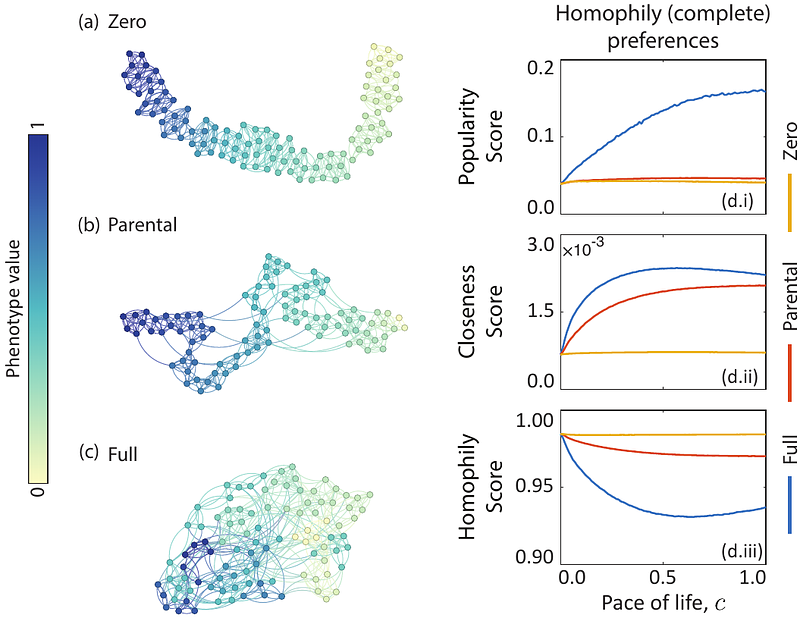The Role of Pace of Life in Animal Social Networks

The Role of Pace of Life in Animal Social Networks
Walker, R. S.; White, A.; O'Neill, X.; Fefferman, N. H.; Silk, M. J.
AbstractPace of life history is a key axis of variation in life history strategies that captures the evolutionary trade-off between investing in lifespan versus reproduction. It has been suggested that social behaviour, and therefore network structure, may vary with pace of life, but formal theory remains scarce. We develop a novel mathematical model to examine how differences in demographic turnover may constrain emergent social network structures in natural populations. We additionally consider variation in social preferences and social inheritance mechanisms. Our key finding is that rapid demographic turnover, associated with faster pace of life, can substantially constrain the structure of dynamic social networks. For slow pace of life, network structures are primarily determined by social preferences, while for fast pace of life they are primarily determined by mechanisms of social inheritance. By considering how demographic turnover can constrain social network organisation, our work provides important insights into social evolutionary ecology.